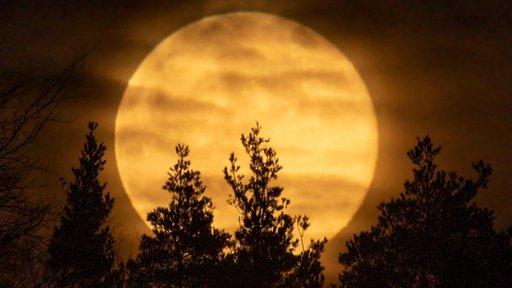Photographers capture supermoon and partial eclipse
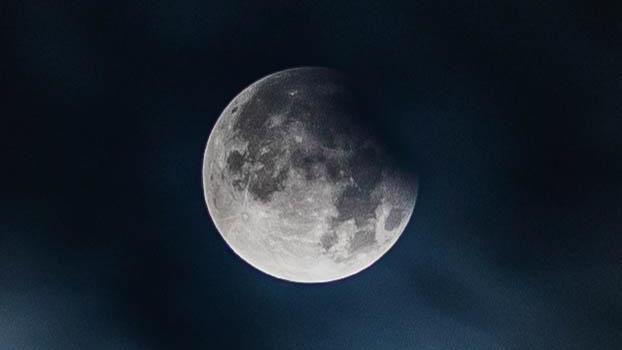
The partial lunar eclipse pictured over the North Yorkshire village of Bulmer
- Published
A spectacular harvest supermoon lit up the sky across Yorkshire, with the celestial body appearing in hues of yellow, copper and orange.
This month's moon, which appeared bigger due to its proximity to earth, also coincided with a rare partial lunar eclipse.
Partial lunar eclipses do not happen very often and to have a partial eclipse of a full moon, which happens to be a supermoon, is even more rare.
Across Yorkshire, BBC Weather Watchers have been sharing their photos of the celestial event.
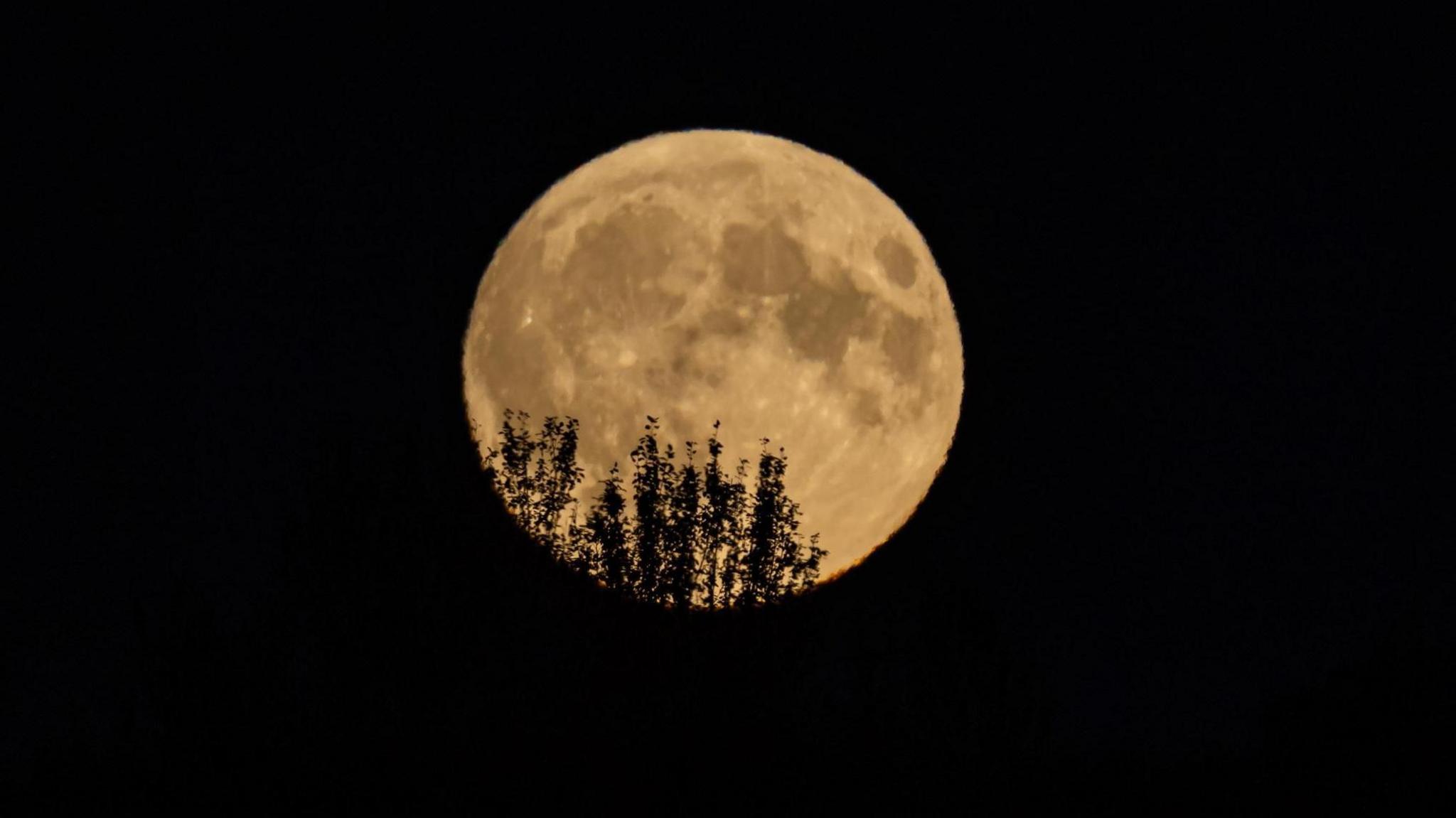
The supermoon over the town of Silsden, Bradford

A glowing supermoon above Barnsley
According to space agency Nasa, external, a supermoon occurs when the moon’s orbit is at its closest (perigee) to the Earth at the same time as the moon is full.
A full moon during perigee will appear 14% larger and 30% brighter than when it is furthest away from the Earth (apogee).
Tuesday's moon, a harvest moon due to it occurring nearest to the autumn equinox on 22 September, rose at around 19:15 BST.
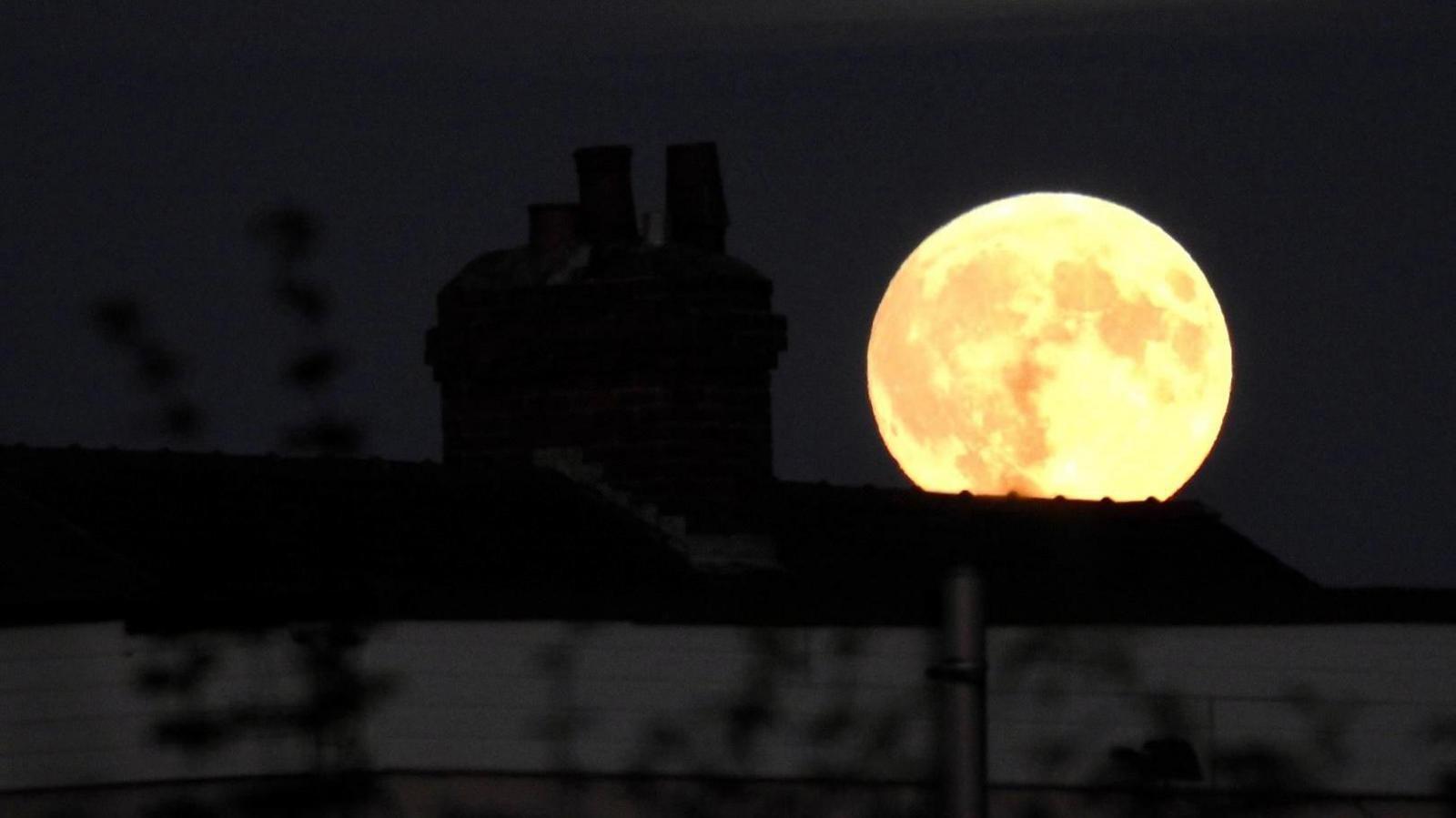
The supermoon over Wakefield
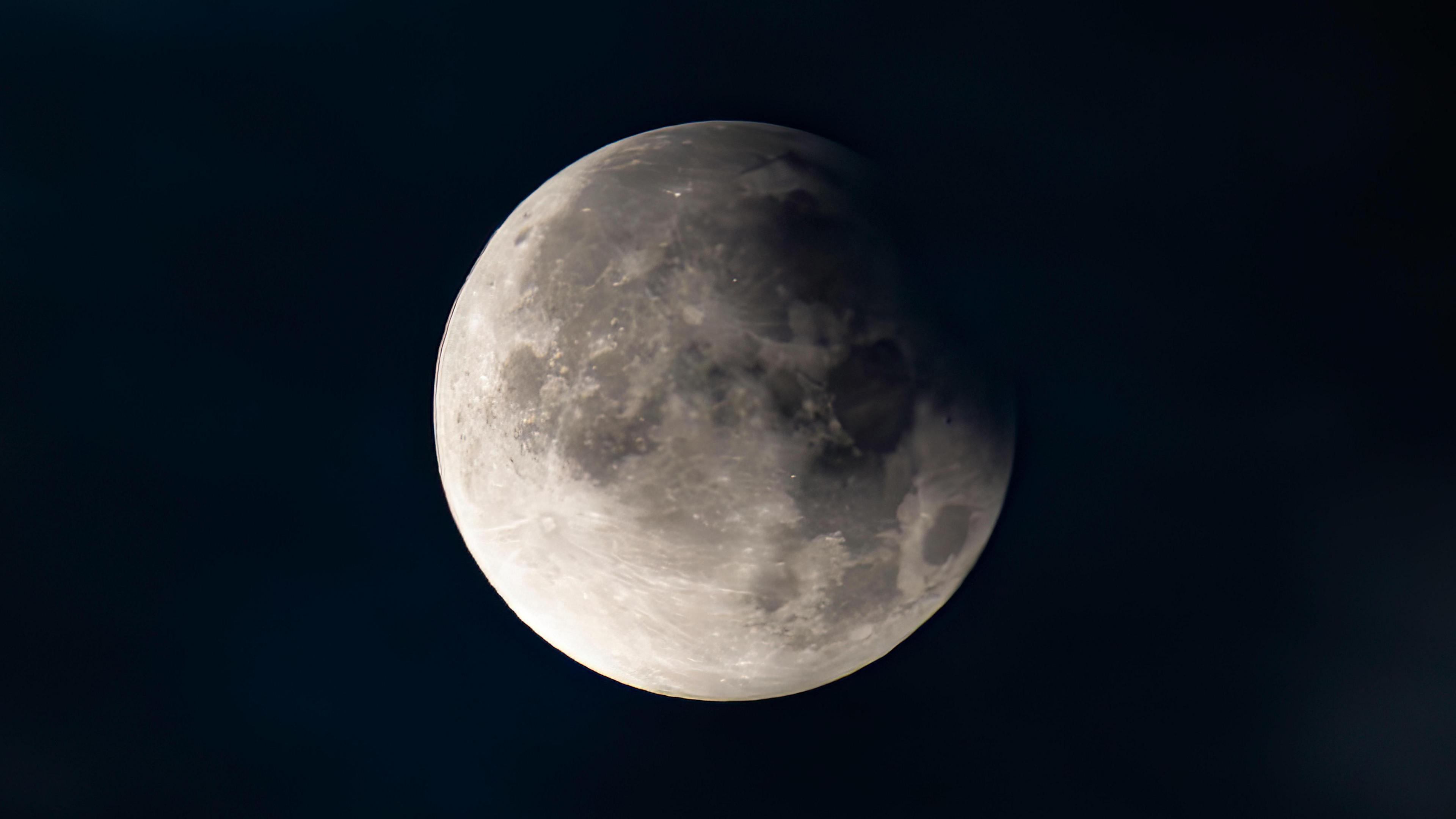
The supermoon captured in Shipley, West Yorkshire
In the early hours of Wednesday morning, a small shadow created by the Earth began to appear in the top right corner of the moon to mark the beginning of the eclipse.
The next partial lunar eclipse will happen in March.
The hunter moon in October and the beaver moon in November will also be supermoons this year.
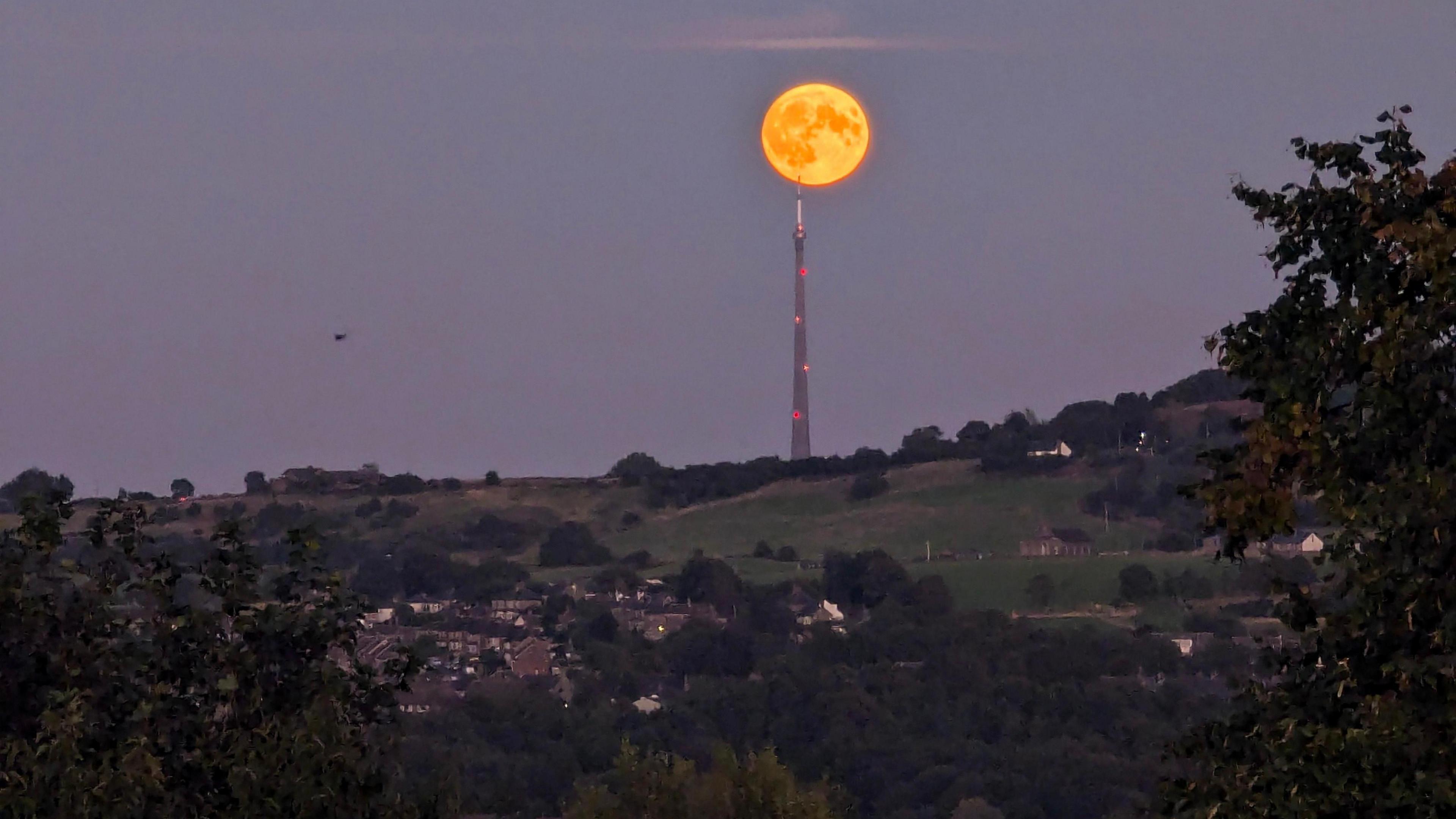
An orange glowing moon above Emley Moor in Huddersfield
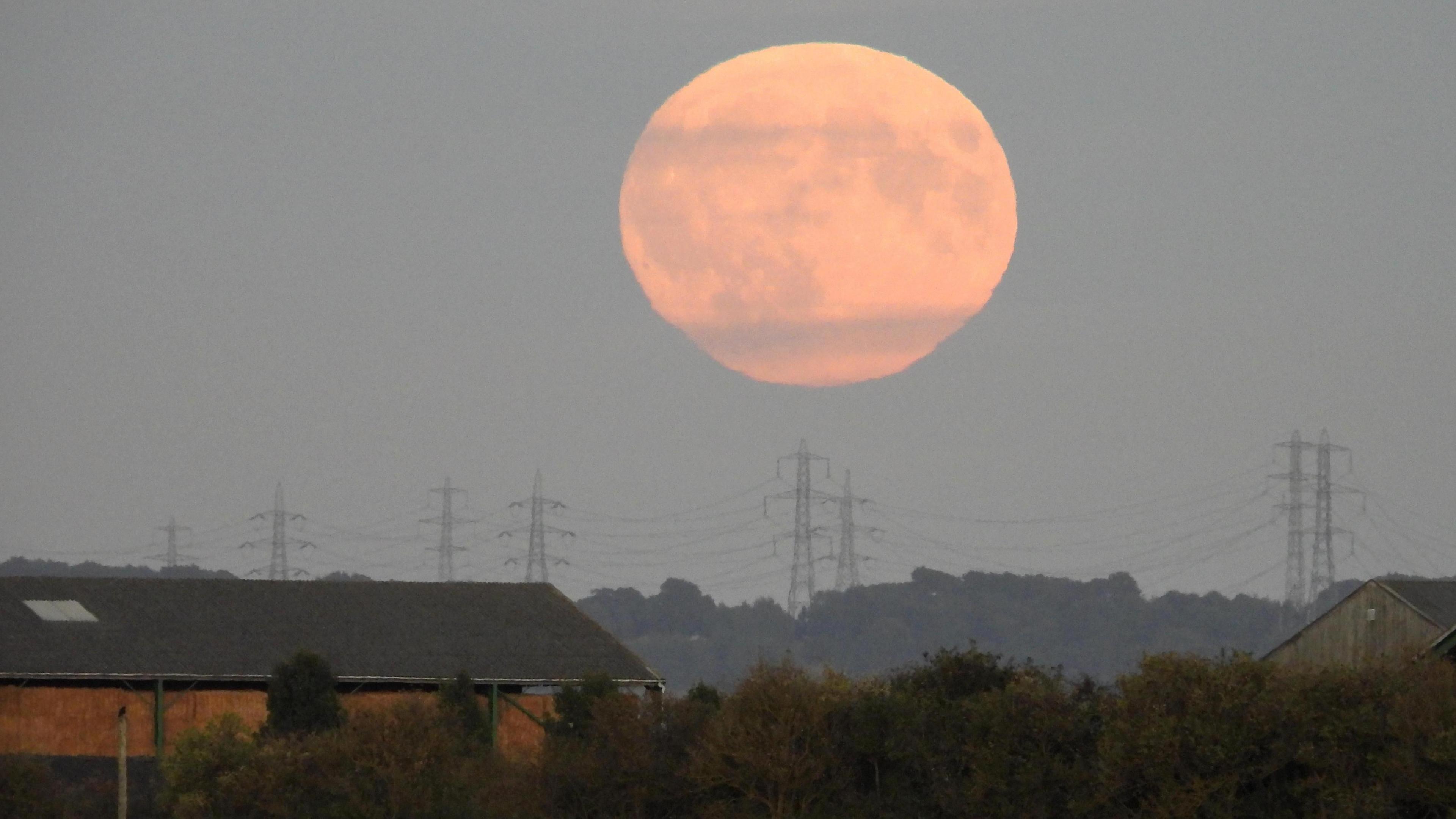
The supermoon over Goole in East Yorkshire
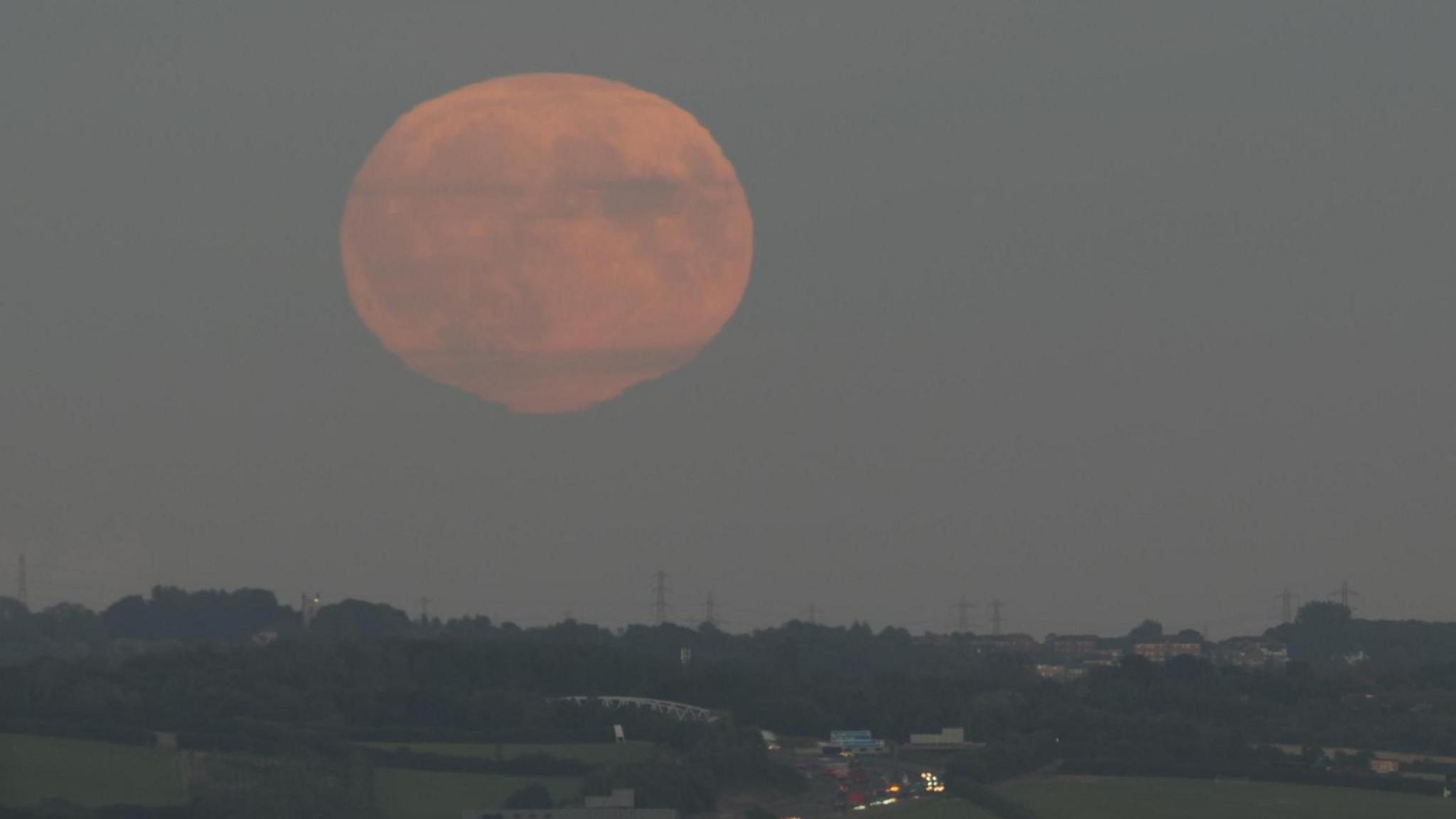
A coppery supermoon above Armley in Leeds
The hunter moon gets its name from the time of the year when people would traditionally be hunting animals for food ahead of the winter months.
The beaver moon, sometimes called frost moon, is named after the time of year beavers would often start building their dams.
Listen to highlights from West Yorkshire on BBC Sounds, catch up with the latest episode of Look North or tell us a story you think we should be covering here, external.
- Attribution
- Published17 September 2024
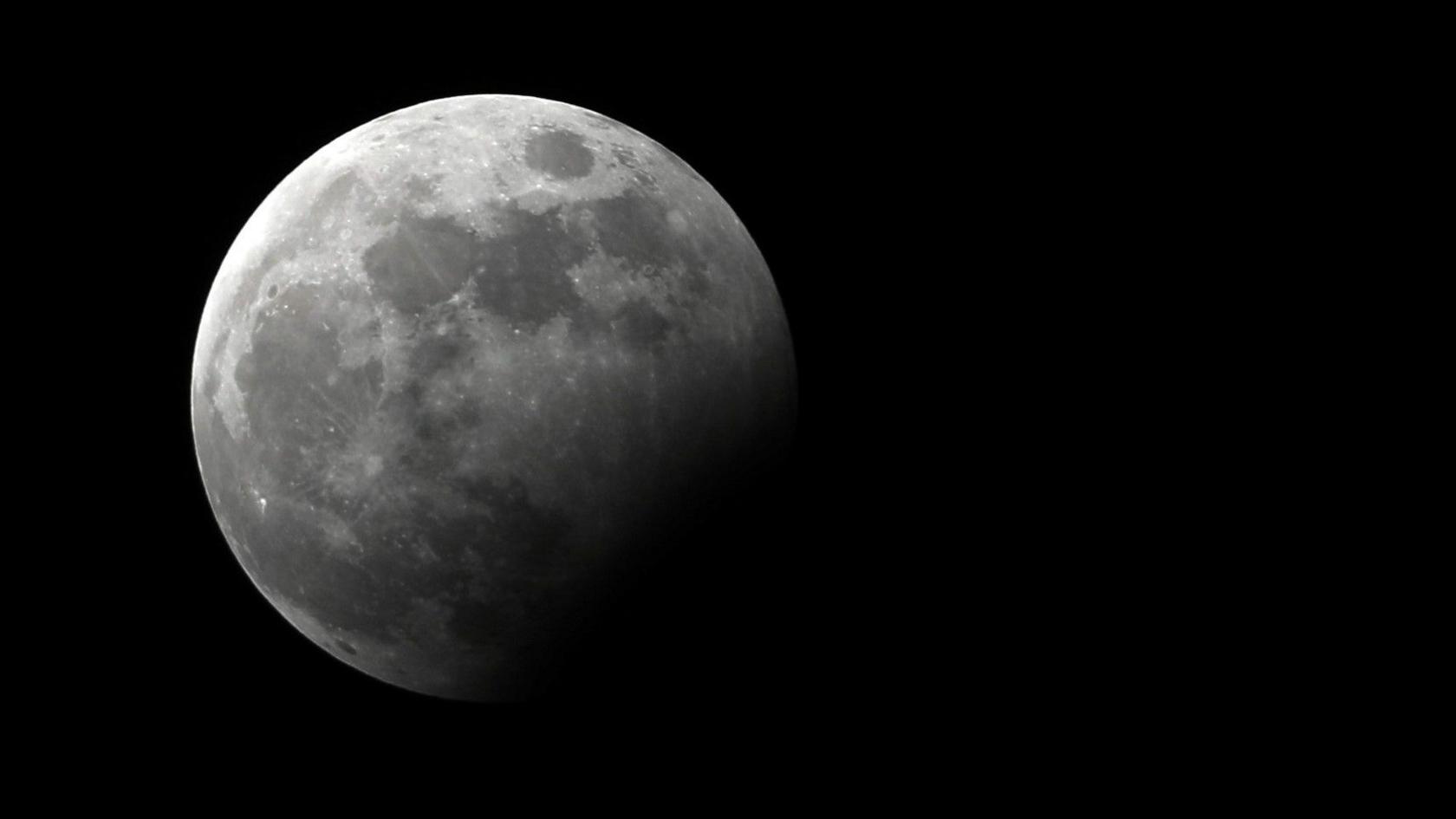
- Published17 September 2024

- Attribution
- Published20 September 2021
